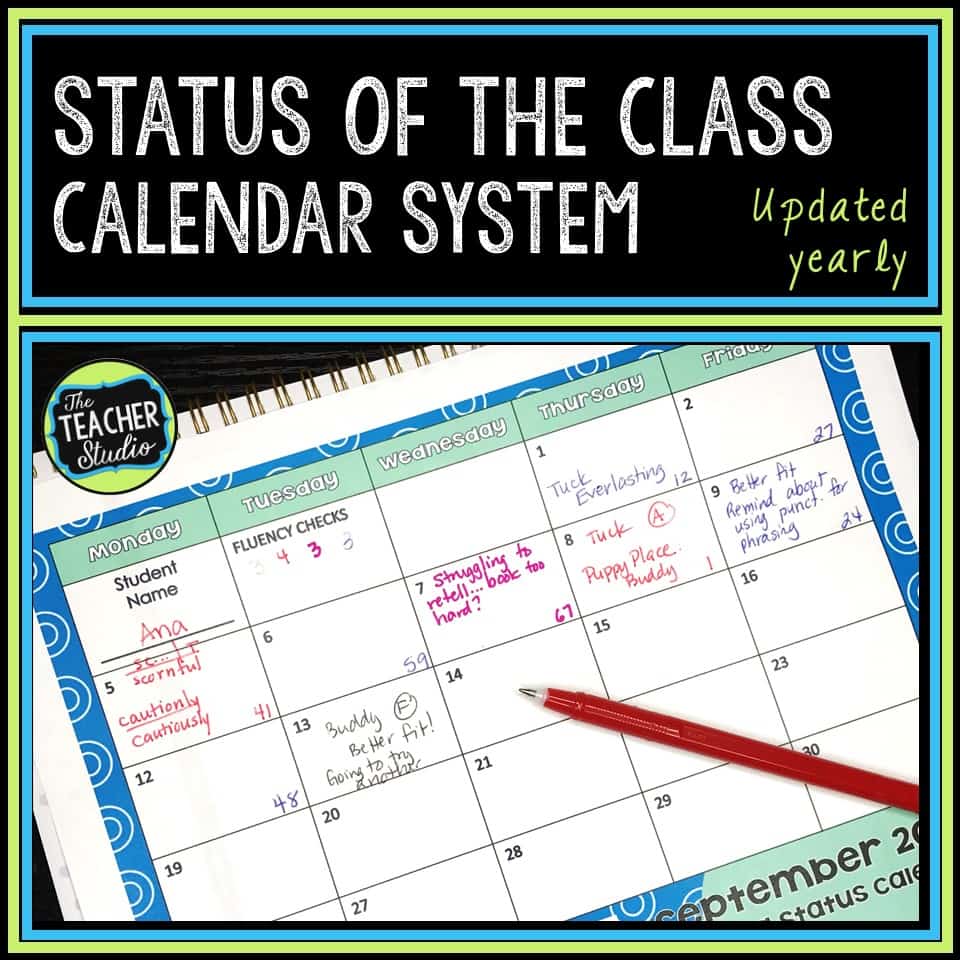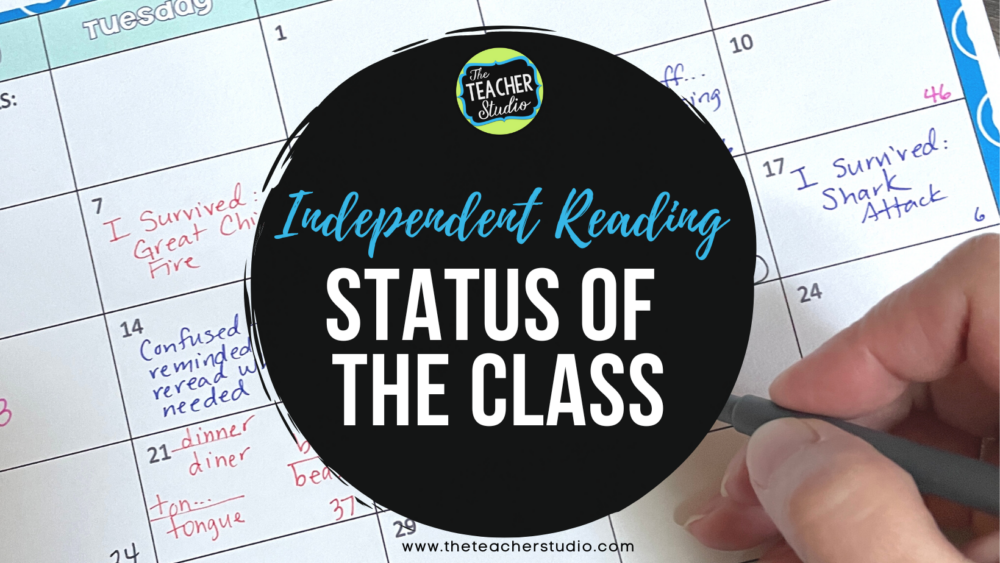 Today I want to share with you a little something that I have done in different forms for YEARS. Do you take “status of the class”? It’s so much more than tracking student reading. Taking reading status is literally one of my favorite times of the day. I call it…
Today I want to share with you a little something that I have done in different forms for YEARS. Do you take “status of the class”? It’s so much more than tracking student reading. Taking reading status is literally one of my favorite times of the day. I call it…
THE POWER OF CONNECTIONS!
One of my favorite (and most valuable) times of my school day begins after lunch when my students come in from lunch recess. They finish chatting with their friends, and find their way back at their desks to get settled in for read aloud time–and then their own independent reading. First, I read to my students for 15-20 minutes and do a minilesson. After that, it’s time for my students to begin their 30 -45 minutes of independent reading time. To make sure I have my finger on the pulse of what they are doing, I take “status of the class” every (almost) day. The entire process could take just a few minutes, but I stretch it out to about 10 minutes. Why?
Taking Reading Status
Those ten minutes are what I consider a “guaranteed connection” time with my students. During that 10 minutes, I know that EVERY single day I can have a meaningful (even if it’ 20 seconds!) connection with each student. Whether it be simply asking how they are liking their book, or noticing that they MUST have read a ton at home the night before, or to mention another book they may enjoy–this is my time to get in touch with them as readers and as people.
Each of them gets my full attention for their “status check”–and even though 20-30 seconds doesn’t seem like a lot, think about your day. How many other times in a day can you make a focused effort to balance your attention to every student? You know that some students demand your attention way more than some others…and this levels the playing field at least for a little while!
Books are Contagious!
As you can imagine, there are other perks as well! I learn about my students’ reading behaviors–about how their reading habits at home…about their taste in book…about how often they abandon and complete books…about their thoughts and opinions about books…and more. Not only that, but the other students get to reap the benefit as well by hearing about all the great books others are reading. And all of this is shared in this little “mini conferences”. Books are contagious. “The Lemonade War” series made its way around my class this year because students heard about it during status time. We had to keep a list of who got each book next!
How do I do it?
I have taken status in different ways for many years. Finally, I have a system that is my “go to” every year now. I always considered status time to be a “data collection” time and a way for me to hold students accountable. What I find instead is that once we start–the STUDENTS notice if I skip a day! It becomes very clear that taking status isn’t just for me; my students really appreciate the information shared during that time. Students use this time to make book recommendations. They brag about how much they read the night before. Sometimes they even to ASK for recommendations for others. What a great way to build a reading community!
A few years ago I had posted about this very topic on my blog and was bombarded with questions from teachers asking how I keep track of everything, so I put all the information together in a resource so people can see it in action. Lots of people gave it a try and found it to be super helpful. When I made my system, I also made the plan to update it yearly so people can always go back year after year to redownload the update. Here are a few super blurry pictures to give you an idea of how taking reading status works in my classroom.
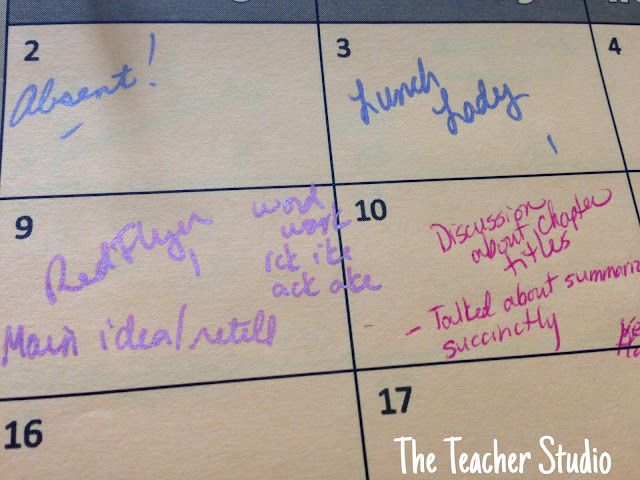 |
| Using the calendar pages to record what book they read…what page…and any anecdotal notes. |
 |
| A place to add goals |
 |
| I note “A” for abandoned books and “F” for finished books |
 |
| I use the back of the page to do word work with students during their conferences |
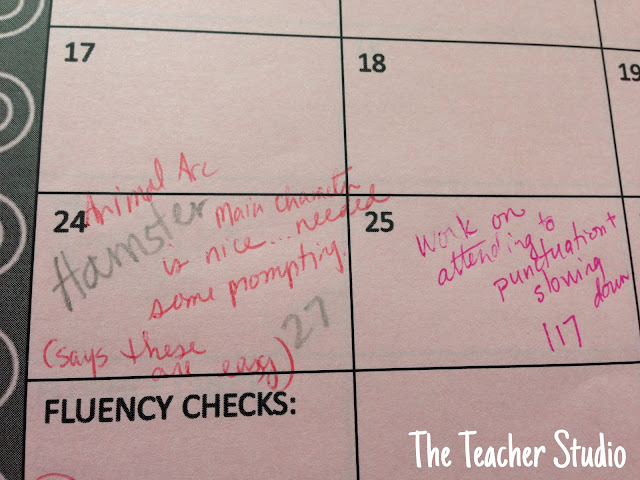 |
| Notes that I want to remember |
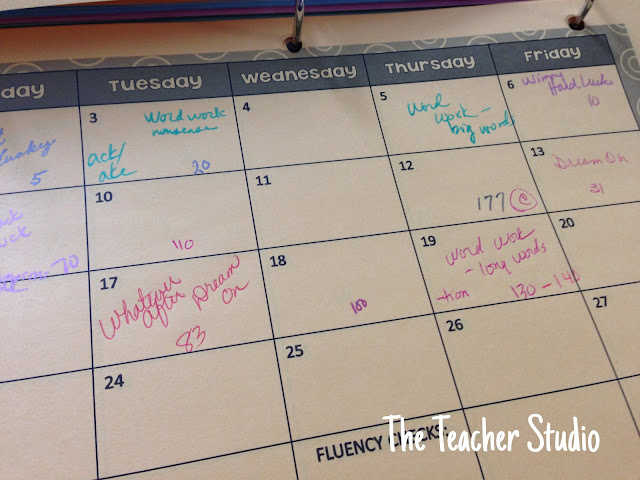 |
Click HERE or the image below if you want to learn more! Remember, it’s available with both print AND digital calendars for ultimate flexibility!
